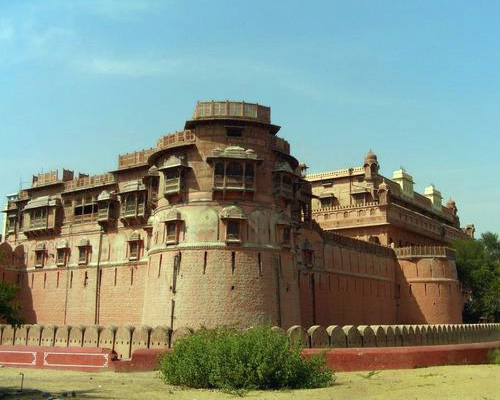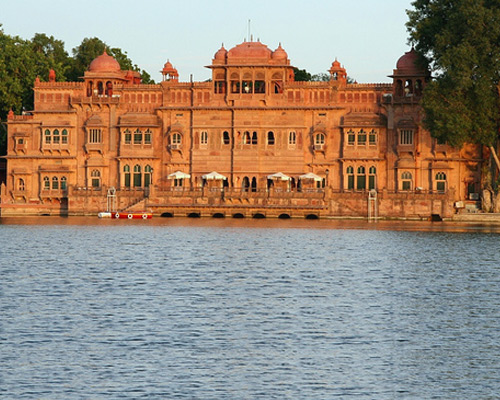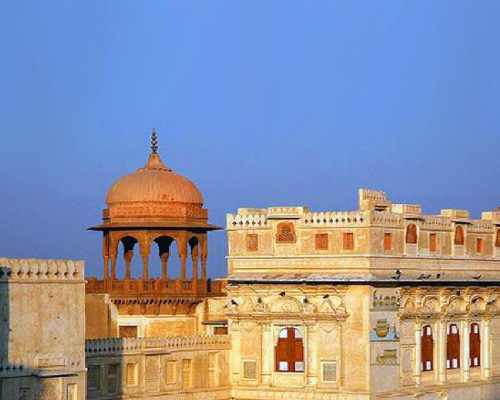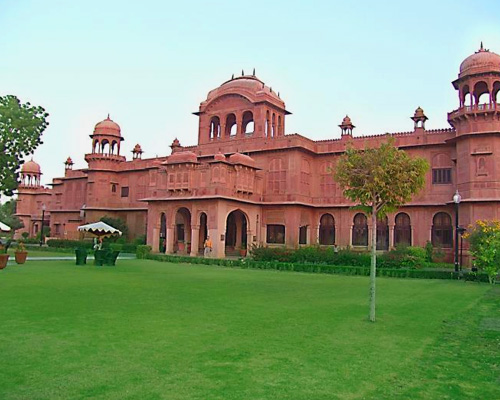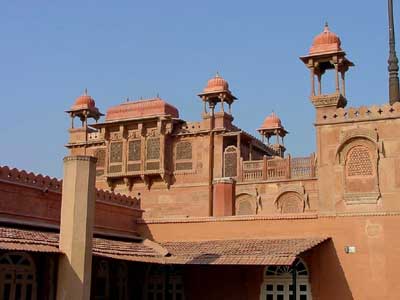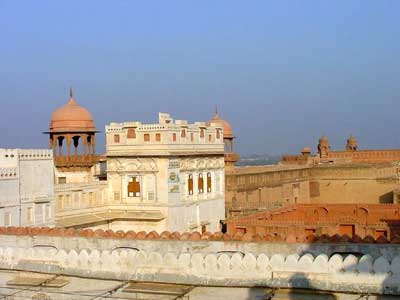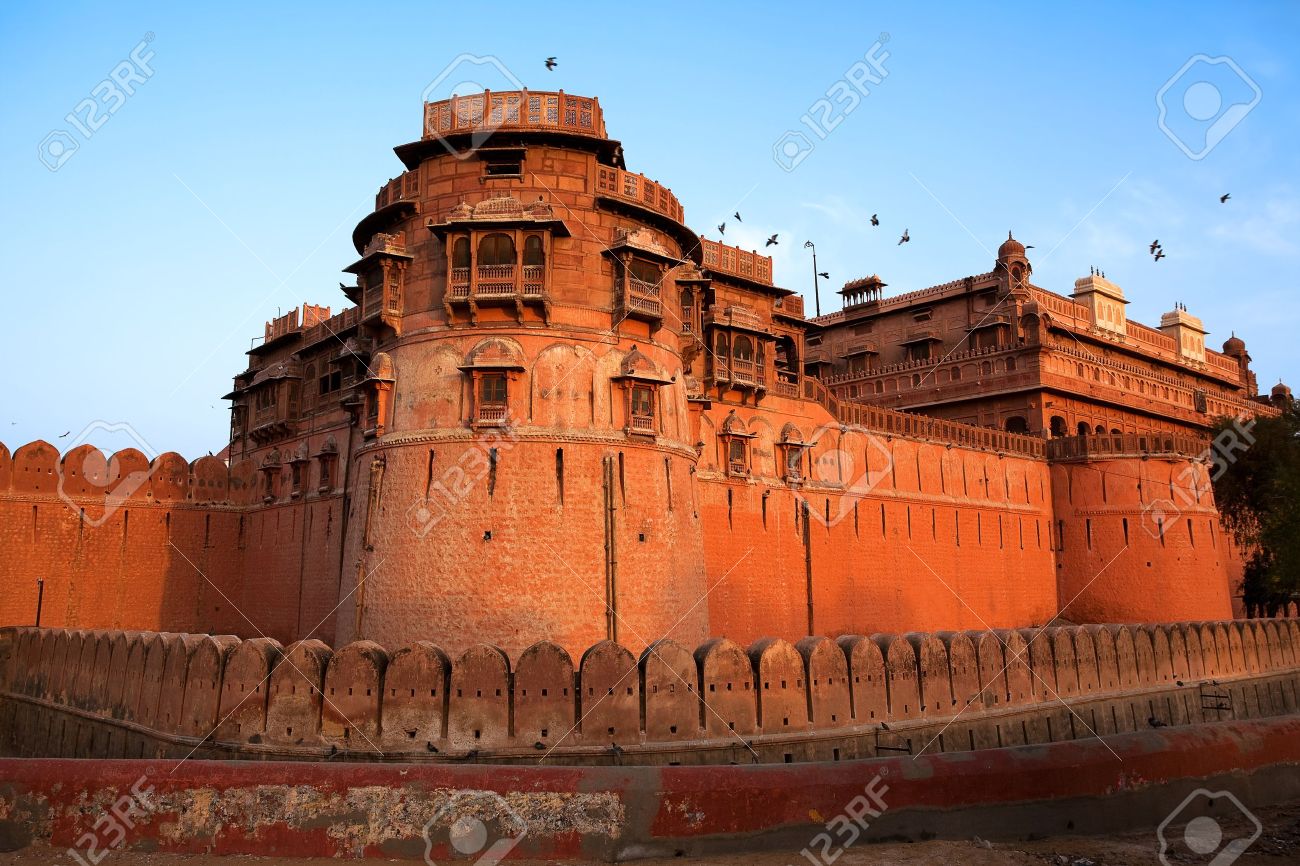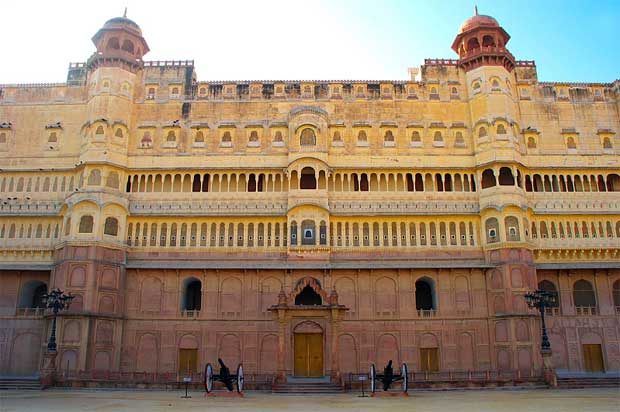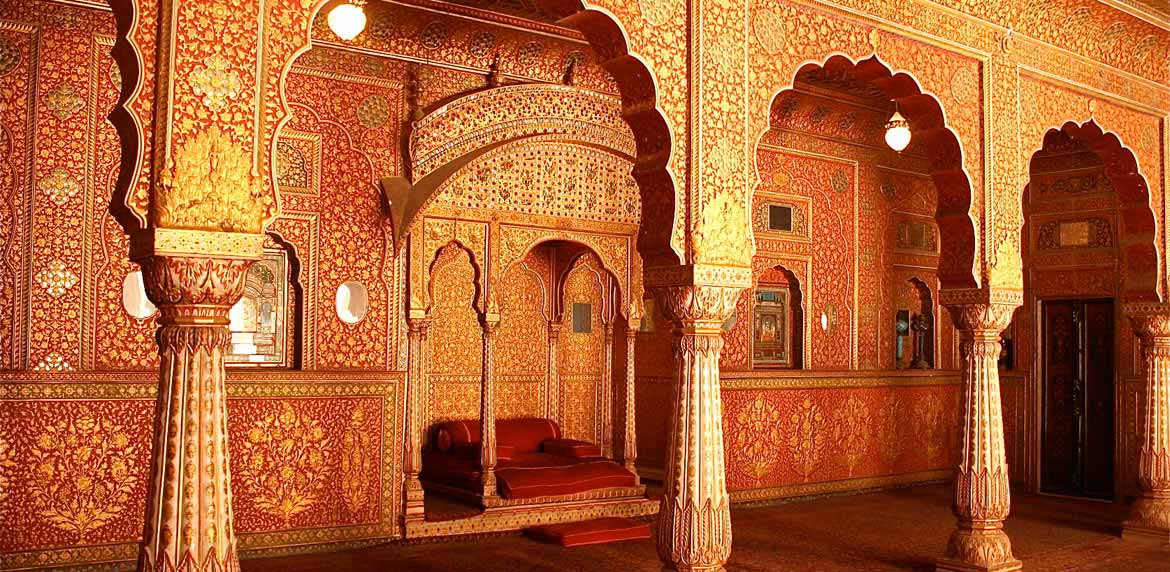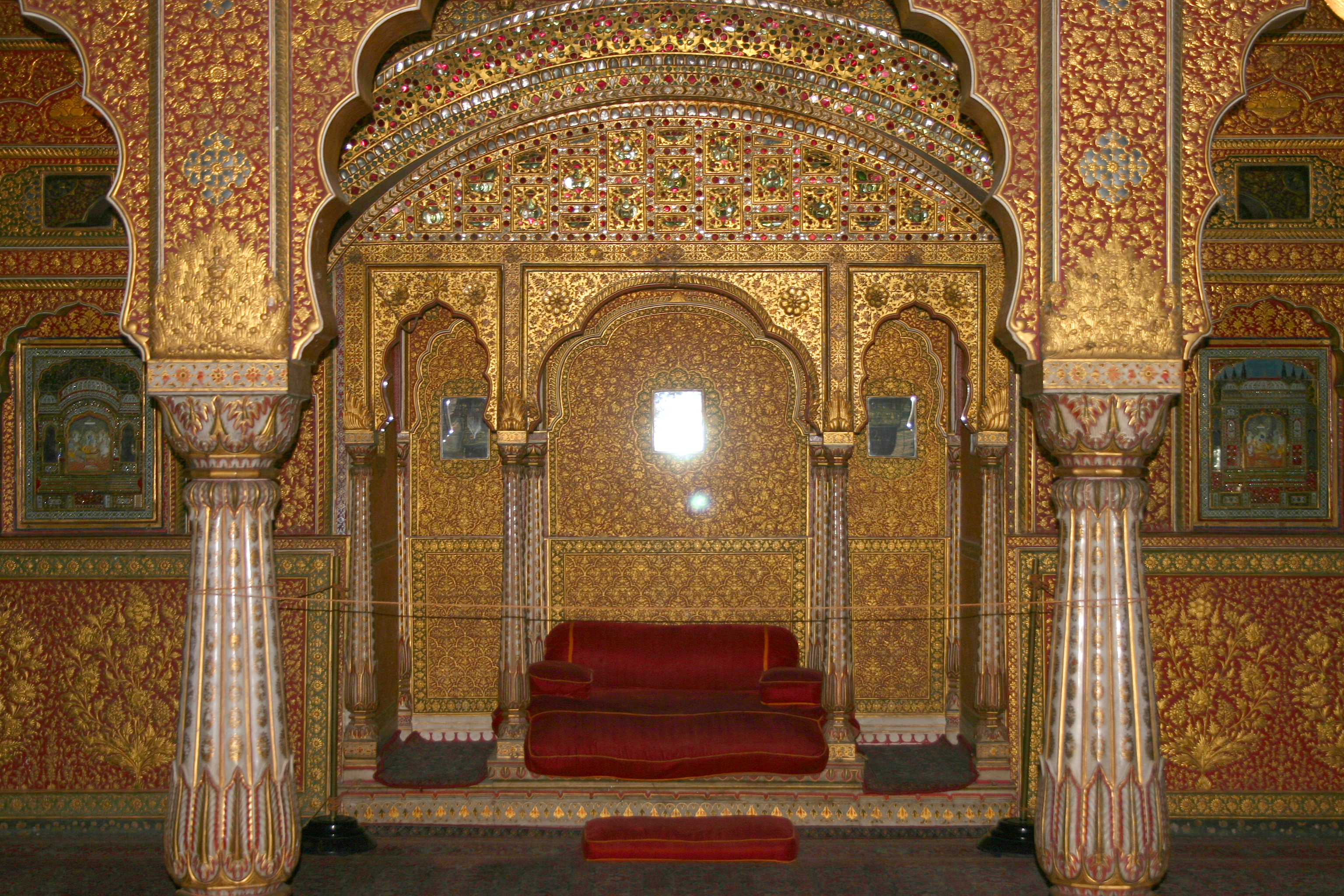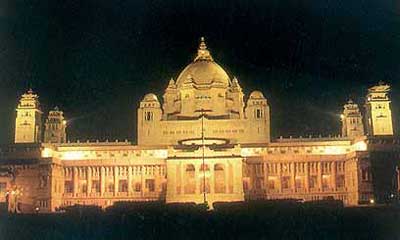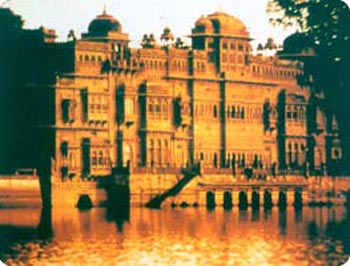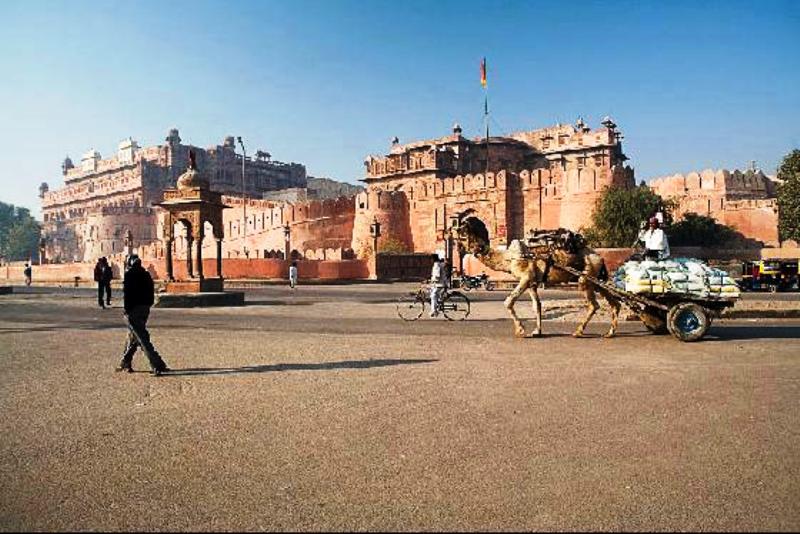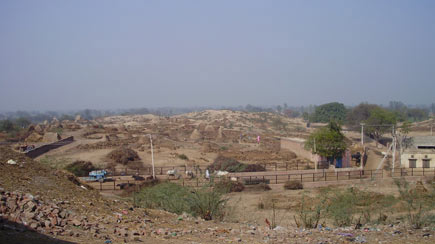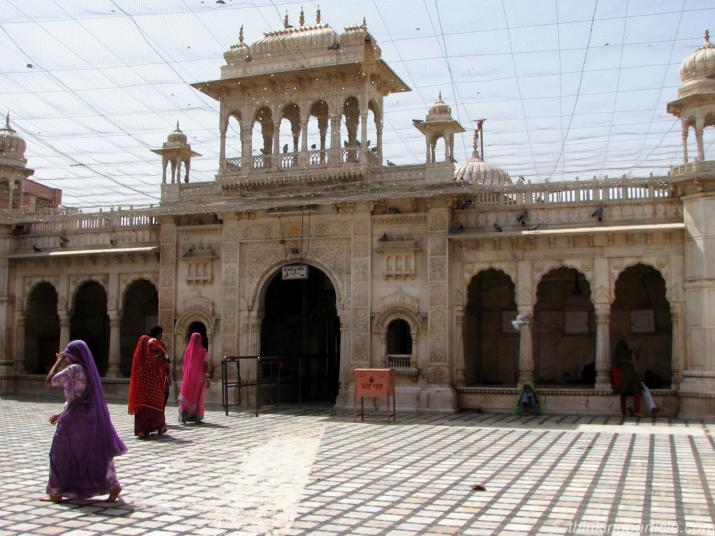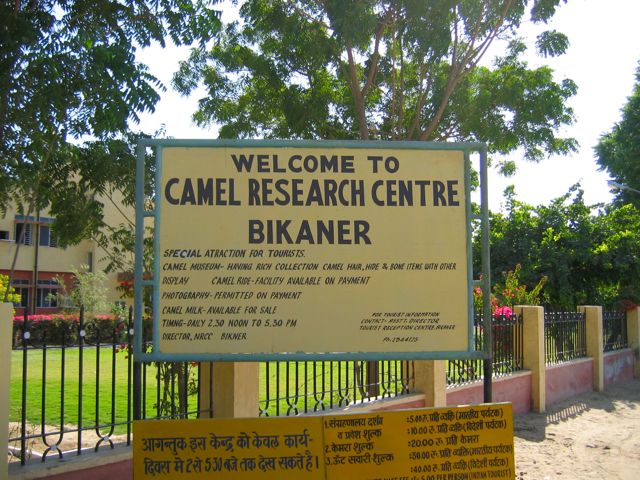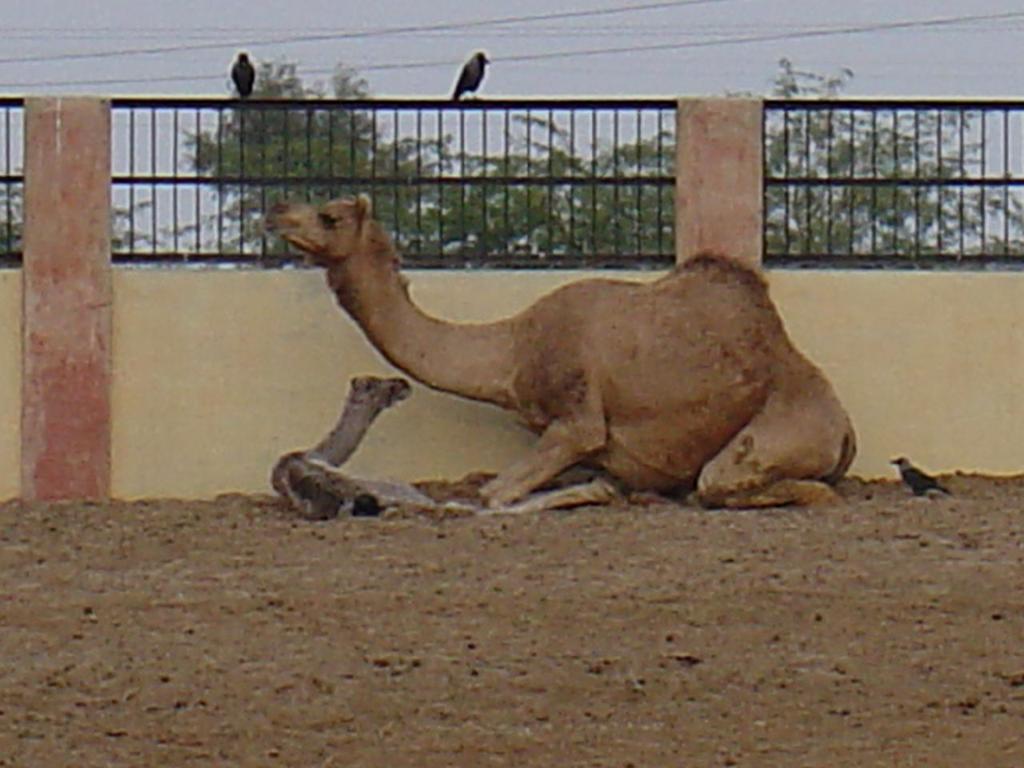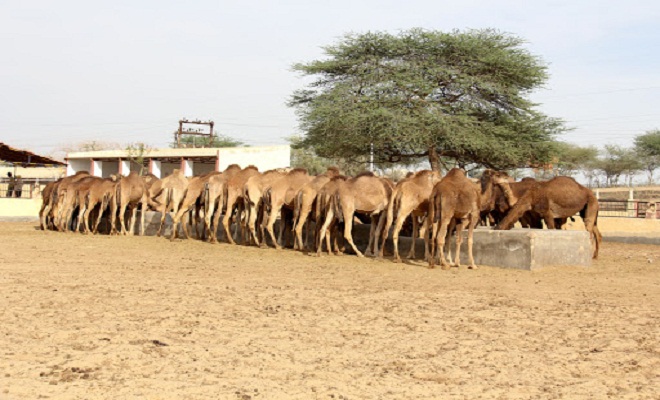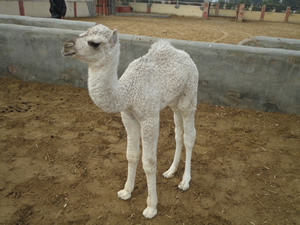Bikaner, Citadel of Culture and Camels
General Information
District:BikanerState:RajasthanCountry:IndiaArea:38 Sq. Km.Language Spoken:Rajasthani, Hindi, English.Long Distance Code:+91-151Importance:Karni devi temple where rats are treated as petsBest Time To Visit:October to FebruaryDescription:
Bikaner's history dates back to 1488 A.D. when a Rathore prince, Rao Bhikaji, established his kingdom here. He was the descendant of the founder of Jodhpur (1459) A.D. Rao Jodhaji. Rao Jodhaji had five sons and Bhikaji proved to be the most enterprising amongst them. He chose a barren wilderness to transform it into an impressive city called Bikaner.
Ever since the foundation of Bikaner till its accession into Indian union, Bikaner has always played an important role in the history of the country. Bikaner has produced several able generals and warriors and distinguished rulers. The most important of them was Akbar's general Raja Rai Singhji. Raja Anup Singh's tenure, who ascended the throne in 1669A.D, has been described as the golden time of Bikaner's fame and valor.Location:
Bikaner, heart of west Rajasthan is known as the 'Tapo bhoomi' of great sages and saints, since pre-historic times. The holy rivers of Saraswati and Drishadwati used to flow in this region. Archaeologists believe that the great Indian desert, of which Bikaner is a part, was once an ocean. A belief which stands substantiated by the presence of sedimentary layers of various kinds of the precious clay, bajri etc. in the holy Kolayat area55 kms away from Bikaner.
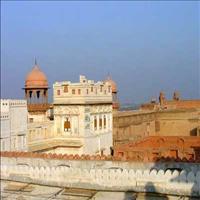 This fort was built between1588-1593 A.D. by Raja Rai Singh, a general in army of Mughal emperor Akbar. The Suraj pol is the main entrance to this fort. The palaces are on the southern side of the fort and courtyards, balconies and windows.
This fort was built between1588-1593 A.D. by Raja Rai Singh, a general in army of Mughal emperor Akbar. The Suraj pol is the main entrance to this fort. The palaces are on the southern side of the fort and courtyards, balconies and windows.The major feature of the Junagarh fort is the excellent quality of stone carving, best in the world. The Chandra Mahal or the moon palace is beautiful with paintings, mirrors and carved marble panels. The phool mahal or the flower palace is decorated with glass and mirrors. The Karan mahal was built to commemorate the victory over Mughal emperor Aurangzeb. The Anup Mahal is famous for its gold leaf painting.
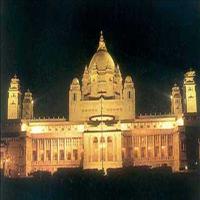 The architectural masterpiece in red sand stone, built by Maharaja Ganga Singh (1881-1942A.D.) in the memory of his father Maharaja Lall Singh is an example of pure Rajput martial architecture. Designed by Sir Swinton Jacob, this palace has large halls, pavilions, lounges and couplas. It has magnificent pillars, richly carved fire mantles, Italian colonnades and motif of lotus in full bloom. Walls of the palace are reminiscent of the past vintage etchings, hunting trophies and old portraits. The palace has its own museum and library that is the fourth largest in the world. The royal family still lives in part of the palace.
The architectural masterpiece in red sand stone, built by Maharaja Ganga Singh (1881-1942A.D.) in the memory of his father Maharaja Lall Singh is an example of pure Rajput martial architecture. Designed by Sir Swinton Jacob, this palace has large halls, pavilions, lounges and couplas. It has magnificent pillars, richly carved fire mantles, Italian colonnades and motif of lotus in full bloom. Walls of the palace are reminiscent of the past vintage etchings, hunting trophies and old portraits. The palace has its own museum and library that is the fourth largest in the world. The royal family still lives in part of the palace.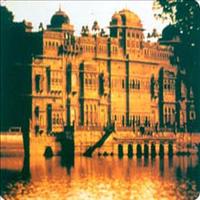 Gajner palace was summer resort of the Maharajas of Bikaner and is often referred to as the incomparable jewel in the Thar desert. The beautiful paace stands on lake. Built by Ganga Singh of Bikaner, the palace was used for grand shoots and lavish entertainments by the Maharaja. Indian and foreign royalties, Viceroys and other dignitaries have been entertained here. The amazing craftsmanship with intricately carved pillars, charkas and screens leaves one awestruck. It is surrounded by beautiful sanctuary which provides shelter to chinkaras, black bucks, Nilgai and flocks of imperial sand grouse. A part of the palace is converted into hotel.
Gajner palace was summer resort of the Maharajas of Bikaner and is often referred to as the incomparable jewel in the Thar desert. The beautiful paace stands on lake. Built by Ganga Singh of Bikaner, the palace was used for grand shoots and lavish entertainments by the Maharaja. Indian and foreign royalties, Viceroys and other dignitaries have been entertained here. The amazing craftsmanship with intricately carved pillars, charkas and screens leaves one awestruck. It is surrounded by beautiful sanctuary which provides shelter to chinkaras, black bucks, Nilgai and flocks of imperial sand grouse. A part of the palace is converted into hotel.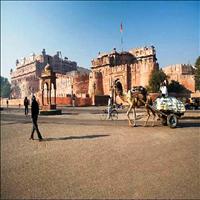 This museum has the richest collections of terracotta ware, weapons, miniature paintings of Bikaner school and coins. The exhibits are splendid masterpieces of the Harrapan civilization, Gupta and Kushan era and sculptures of the late classical time.
This museum has the richest collections of terracotta ware, weapons, miniature paintings of Bikaner school and coins. The exhibits are splendid masterpieces of the Harrapan civilization, Gupta and Kushan era and sculptures of the late classical time.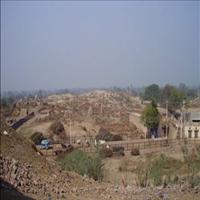 The extensive remains of the pre-Harrapan and the Harrapan civilization in the Hanumangarh district are of immense importance and interesting. They are also the very important for archaeologists.
The extensive remains of the pre-Harrapan and the Harrapan civilization in the Hanumangarh district are of immense importance and interesting. They are also the very important for archaeologists.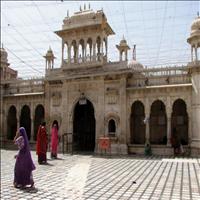 This 600 year old famous temple on the Jodhpur highway is dedicated to mata Karni, a form of Goddess Durga. The temple has huge intricately carved silver gates donated by Maharaja Ganga Singh. The interesting thing about the temple is the rats roaming freely around. They are fed by the priests and the devotees, owing to the belief that they will be reincarnated as holy men.
This 600 year old famous temple on the Jodhpur highway is dedicated to mata Karni, a form of Goddess Durga. The temple has huge intricately carved silver gates donated by Maharaja Ganga Singh. The interesting thing about the temple is the rats roaming freely around. They are fed by the priests and the devotees, owing to the belief that they will be reincarnated as holy men.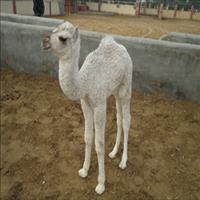 The camel is an important animal component of the fragile desert eco-system. With its unique bio-physiological characteristics, the camel has become an icon of adaptation to challenging ways of living in arid and semi-arid regions. The proverbial Ship of Desert earned its epithet on account of its indispensability as a mode of transportation and draught power in desert but the utilities are many and are subject to continuous social and economic changes. The camel has played a significant role in civil law and order, defense and battles from the ancient times till date. The world famous Ganga-Risala of erstwhile Bikaner State was accepted as Imperial Service Troup and participated in World War I and II. The camel helped the engineers while constructing the Indira Gandhi Canal in Western part of Rajasthan. Presently, the camel corps constitutes an important wing of Border Security Force of Indian Para-Military Services.
Considering the importance of camel in the socio-economic development of arid and semi-arid zones, the Government of India established a Project Directorate on Camel at Bikaner (India) on 5th July 1984 under aegis of Indian Council of Agricultural Research (ICAR) which was upgraded to National Research Center on Camel (NRCC) on September 20, 1995.
The camel is an important animal component of the fragile desert eco-system. With its unique bio-physiological characteristics, the camel has become an icon of adaptation to challenging ways of living in arid and semi-arid regions. The proverbial Ship of Desert earned its epithet on account of its indispensability as a mode of transportation and draught power in desert but the utilities are many and are subject to continuous social and economic changes. The camel has played a significant role in civil law and order, defense and battles from the ancient times till date. The world famous Ganga-Risala of erstwhile Bikaner State was accepted as Imperial Service Troup and participated in World War I and II. The camel helped the engineers while constructing the Indira Gandhi Canal in Western part of Rajasthan. Presently, the camel corps constitutes an important wing of Border Security Force of Indian Para-Military Services.
Considering the importance of camel in the socio-economic development of arid and semi-arid zones, the Government of India established a Project Directorate on Camel at Bikaner (India) on 5th July 1984 under aegis of Indian Council of Agricultural Research (ICAR) which was upgraded to National Research Center on Camel (NRCC) on September 20, 1995.Timings: 1500-1700Hrs
